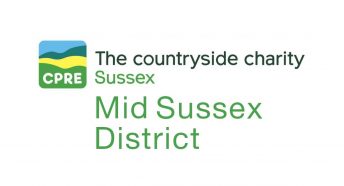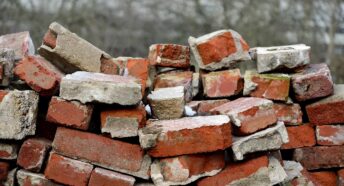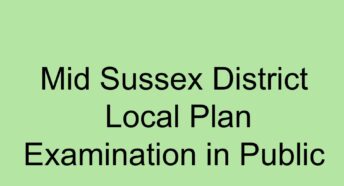Act now – Mid Sussex local plan review threatens countryside and wildlife
The Woodland, Flora & Fauna Group asks you to help to fight to save our rural communities, local countryside and wildlife and prevent the destruction of nature conservation achievements.
You can respond to the Mid Sussex district plan review until 19 December – see details below.
Origin and activity of The Woodland, Flora & Fauna Group
Following a meeting held with local groups, parish council and Mid Sussex District Council representatives in 2004, The Woodland, Flora & Fauna Group was formed to identify local countryside value through a biodiversity study with a view to protecting it from anticipated future development threats. This subsequently led to many additional projects being identified to protect valued countryside and endangered wildlife with supporter voluntary donations and grant funding sought to achieve them. From 2004 to 2022 the group has been working ceaselessly to achieve these aims.
This includes a barn owl conservation project which has helped to raise the amber listed endangered species status it possessed to one that is green and out of danger; a Site of Nature Conservation Importance that has been restored to provide natural meadowland and previously identified distinctive flora species to re-appear; the restoration of a large woodland wildlife pond to provide habitat for scores of wildlife species; a project to increase survival opportunities for dwindling bat species with the creation of roosting and breeding opportunities in woodlands; the enhancement and maintenance of a small local nature reserve; and a wide area initiative to increase survival prospects for endangered dormice by mounting scores of boxes in suitable woodland locations.
These initiatives have been worked on ceaselessly by local group volunteers to retain and improve the large areas of suitable countryside necessary for wildlife and distinctive flora species to flourish (e.g. a barn owl requires a 2km radius hunting area of suitable terrain around their breeding site to obtain sufficient prey to survive). The volunteers have achieved this in conjunction with very supportive local landowners who wish to help us with our work.
This has always required from us a reminder of the value of these areas to council officials when developers seek to devour large areas of this countryside for housing or industrial development and road creation. The need for such development is not disputed but the developer’s preference to submit applications to build on valuable greenfield areas is. Green fields provide the developer with an easier task which provides more profit. Brownfield sites are available as an alternative but cost money to clean up to develop, which in turn reduces profit margins, so greenfield sites are always chosen in preference, regardless of the environmental damage and wildlife loss this causes. This is short-term thinking which borders on being irresponsible, so we are forever challenging it.
Our work centres mainly in and around southern Mid Sussex. Some of our expansion outwards into a much larger area has been made necessary where development in the areas we preserve, has caused damage and reduced habitat essential for our maintained species to continue surviving. Increasingly this damage which is causing catastrophic consequences for both the natural world and human survival has been highlighted, but short-term objectives continue to prevail, and it is being disregarded.
Measures to placate this concern with current nationally required biodiversity ‘Net Gain’ initiatives being incorporated in development applications have been introduced but are proving largely cosmetic. If an area of ancient woodland is removed but a net gain initiative of planting replacement tree saplings elsewhere is incorporated, this is considered adequate compensation to those driving the development. Of course, it is emphatically not, for the wildlife and flora which depends on the woodland or countryside for survival cannot wait for 20 or 30 years for it to mature to provide suitable replacement habitat. They are therefore wiped out as indigenous species in the area affected.
Additionally, such habitat located close to areas of development or busy roadways are permanently damaged by their close proximity and are forced to seek re-location in remaining areas of natural habitat further away. Hence our forced need to continuously expand our conservation areas. Many of our originally installed barn owl boxes are no longer utilised by the species due to the deterioration of the surroundings that are essential to their survival.
Mid Sussex District Plan review
Mid Sussex District Council are currently reviewing their District Plan. A new plan for the period from 2021 to 2039 is now in its public consultation period for a 6-week period from 7 November to 19 December 2022. The latest figure, after allowing for the houses completed in 2020/21 and the existing permissions and allocations, is 8,169. This includes some extremely large development proposals which will have massive impacts on the countryside areas concerned. A lot of this development is to absorb housing numbers that adjoining Districts say they can’t provide in their own areas. Mid Sussex is therefore being used as a dumping ground to provide the development of others that we don’t need in our District.
Unfortunately, due to the Area of Outstanding Natural Beauty in the north of Mid Sussex which includes Ashdown Forest, and the South Downs National Park in the south which have a degree of protection, they are focussing nearly all their increased development into the area of countryside between the two to achieve it.
Over 50% of this will be within the area we have spent 18 years working hard to protect. This will of course hugely damage the majority of our work as it is widely recognised that the loss and fragmentation of existing habitats have the most significant impact on populations of wildlife and the value of the countryside that supports them.
All countryside supporting groups and organisations are of the same opinion and have been challenging the council on their proposal to shoehorn in such a huge amount of development into such a concentrated area.
The council’s proposals are contained in a very large consultation document which is difficult to examine within the short 6-week consultation period they have allowed for public responses to be written.
At a full Council meeting last month, Mid Sussex District Council refused to amend this 6-week consultation period despite a request from CPRE for a more reasonable 12-week period.
The Code of Practice for Consultations issued by HM Government online states: ‘Consultations should normally last for at least 12 weeks with consideration given to longer timescales where feasible and sensible’.
Considering the length and complexity of the Mid Sussex Draft Plan the 6-week period is considered totally inadequate by all who wish to respond. In view of this pressure to restrict any opposition to the review document it is vital that as many people as possible who are affected by this or share our concerns write in quickly with their objections. The new plan for the period from 2021 to 2039 is now in its public consultation period for a 6-week period from 7 November to 19 December 2022.
In order to explain the implications more fully Mid Sussex District Council are holding a number of exhibitions around the District, the content of each being identical, so that those unable to attend their local exhibition can receive the same information by attending another.
The times and dates of the public exhibitions are as follows. All sessions are from 5pm to 7pm.
| Monday 21 November | Bolney (Rawson Hall) |
| Tuesday 22 November | Hurstpierpoint (Holy Trinity Church) |
| Wednesday 23 November | Ansty (Village Hall) |
| Thursday 24 November | Sayers Common (Village Hall) |
| Monday 28 November | Crawley Down (Haven Centre) |
| Wednesday 30 November | Burgess Hill (Cyprus Hall) |
| Tuesday 6 December | Haywards Heath (MSDC Council Chamber) |
If you are within the Mid Sussex District and/or share our concerns about these proposals and their impact on the countryside affected, please visit these exhibitions and write in before 19 December. There is an online consultation form on the Mid Sussex District Council website: https://midsussex.inconsult.uk/districtplanreg18/
You can also submit your response by email to policyconsultation@midsussex.gov.uk or by post to Planning Policy Mid Sussex District Plan 2021-2039, Oaklands, Oaklands Road, Haywards Heath, West Sussex RH16 1SS
Please help us in our fight to save our rural communities, local countryside and wildlife and prevent the destruction of all our nature conservation achievement.
Michael Nailard
CPRE Sussex




